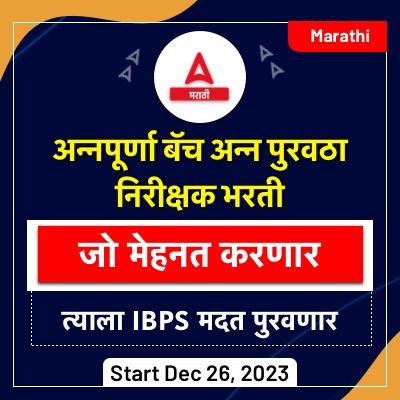Internationalisation of UPI
In its Annual Report for 2023-24, RBI, in collaboration with NPCI International Payments Ltd. (NIPL), set an agenda to work on expanding UPI. RBI aims to expand Unified Payment Interface (UPI) to 20 countries by 2028-29
What is UPI?
- Unified Payments Interface (UPI) is a common platform through which a person can transfer money from his bank account to any other bank account in the country instantly using nothing but his/her UPI ID.
- It was launched in 2016 as Mobile First digital payments platform.
- It’s a popular way to make payments in India because it’s:
- Instant: Money is transferred right away
- Secure: Transactions are protected by a PIN
- Convenient: You can use a single app for all your UPI transactions, even if you have accounts with different banks
- UPI can be used for peer-to-peer payments (sending money to friends or family) and for paying merchants
- It is available round the clock 24*7 and 365 days and also has QR code feature.
- UPI operates on a standardized protocol. This means any UPI app, regardless of the bank it’s associated with, can understand the information encoded in a UPI QR code.
- Developed by: National Payments Corporation of India (NPCI) under the guidance from RBI.
- NPCI, a not-for-profit Company (Section 8 of Companies Act 2013), is an umbrella organisation for operating retail payments and settlement systems in India, is an initiative of RBI and Indian Banks’ Association (IBA) under the provisions of the Payment and Settlement Systems Act, 2007.
What is the significance of UPI?
- Convenience for Everyone: UPI works seamlessly between banks, businesses, and individuals, enabling instant and easy transactions.
- Financial Inclusion: It promotes digital banking and reduces reliance on cash, bringing more people into the formal financial system.
- Economic Benefits: By reducing cash usage, UPI cuts costs for banks and potentially increases tax revenue.
- Financial Innovation: UPI’s open framework fosters competition and innovation in the fintech space, thus blunting data monopolies.
- Global Recognition: UPI’s success positions India as a leader in financial technology solutions.
What is the significance of Internationalization of UPI?
- Convenience & Cost-effectiveness: Indian travelers abroad can potentially use UPI for making payments in countries that have partnered with India for UPI acceptance. Also, UPI transactions are generally known for their lower fees compared to traditional international money transfer services.
- Global market expansion: Faster and easier cross-border payments can stimulate trade between India and other countries.
- Interoperability and standardization: Wider adoption of UPI can promote interoperability between payment systems across countries ensuring smoother integration with financial technologies worldwide.
- ‘Digital’ diplomacy: Strengthening of India’s influence and goodwill through technological collaboration.
What are the Challenges in Internationalization of UPI?
- Infrastructure Integration: Integrating UPI with existing international payment systems requires complex technical alignments. This can be a slow and fragmented process.
- Regulatory compliance: Ensuring compliance with diverse regulatory frameworks across multiple jurisdictions can be complex and time-consuming.
- Currency Conversion and Charges: Cross-border transactions with UPI may incur additional charges for currency conversion and processing fees. These fees can impact user experience and discourage wider adoption.
- Security and data privacy: Robust security measures, encryption protocols, and data protection mechanisms are needed to maintain user trust.
Can you answer the following question?
The Unified Payments Interface (UPI) has revolutionized digital payments in India. Critically examine the significance of UPI internationalization and the challenges associated with it.
Women Representation in Legislature
The Election of 74 women to 18th Lok Sabha (LS) is a slight dip in women representation as 78 women were elected to 17th LS (14.4% representation).
- 7% of 797 women contestants won in 18th LS elections.
- Women’s representation in LS increased from 5% in first LS to its highest in 17th LS (14.4%).
- Presently, women members constitute 14.05% of Rajya Sabha members.
- Globally, share of women in national parliaments is 26.9%.
What is the significance of women representation in Legislatures?
- Greater participation by women would bring diverse perspectives to policy decisions, potentially leading to more equitable and effective policies.
- Accounting for around 50% population, legislative representation is fundamental to political empowerment.
- Increased representation could inspire more women to participate in politics and public life.
- Women legislators perform better in their constituencies on economic indicators than their male counterparts.
- Women are less likely to be criminal and corrupt, more efficacious, and less vulnerable to political opportunism.
What are the challenges to women’s legislative representation ?
- Traditional gender norms and societal expectations can discourage women from entering politics.
- Elections can be expensive. Women often have less access to financial resources compared to men, making it harder for them to contest elections
- The political environment in India can be hostile and male-dominated. Women might face sexism, harassment, and a lack of mentorship within political parties
- Media often portrays women politicians differently than men, focusing on their appearance or personal lives rather than their qualifications and policies. This can discourage women from entering politics and limit their visibility.
- Internalised patriarchy can also be one of the reason, where women themselves are often influenced by patriarchal societal norms.
What are the steps taken for increasing women political representation?
- Nari Shakti Vandan Adhiniyam, 2023 (106th Amendment Act) to reserve one-third of seats for women in Lok Sabha and State Legislative Assemblies including Legislative Assembly of Delhi.
- The 73rd and 74 th Constitutional Amendments made reservation of 1/3rd seats in Panchayats and Municipalities for women.
- India pledged to achieve SDG target 5.5, which calls for women’s full and effective participation at all levels of decision-making in politics and public life
Can you answer the following question?
Despite gradual improvements, women remain significantly underrepresented in Indian legislatures. Examine the factors that impede women’s political participation and critically evaluate the potential impact of a reservation system for women in Parliament and state assemblies.
महाराष्ट्रातील सर्व स्पर्धा परीक्षांसाठी ऑनलाईन क्लास, व्हिडिओ कोर्स, टेस्ट सिरीज, पुस्तके आणि इतर अभ्यास साहित्य खाली दिलेल्या लिंक वर क्लिक करून मिळवा.
अड्डा 247 मराठीचे युट्युब चॅनल
अड्डा 247 मराठी अँप | अड्डा 247 मराठी टेलिग्राम ग्रुप











